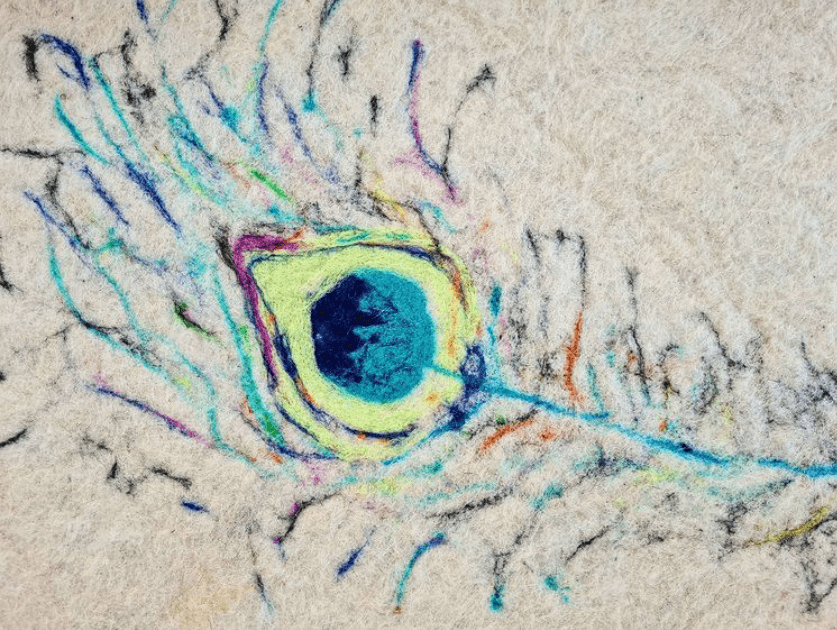In the age of mass-production and overconsumption, artisanal crafts seem to be making a comeback as more and more people crave authenticity over standardised manufacturing. We’re starting a new series to highlight the talented Croatian artisans creating extraordinary things, looking to learn more about their crafts. First up in Meet the Makers, an interview with the woman who’s turning discarded sheep fleece into stunning, eco-friendly wool rugs
Scrolling through my news feed one day, an image caught my eye. A star-shaped white rug, covered in streaks of bright pink and orange, that looked incredibly soft and entirely unique. That’s how I first learned of Likamee wool, a small family business manufacturing felted wool rugs.
Likamee wool is run by two exceptional women: Nada Jandrić, the artisan creating the rugs, and her daughter Ivana who manages the Likamee socials and is also familiar with the craft herself. I reached out to them to learn more about their work and the stars aligned just right for us to meet in Zagreb for a chat.
Blurring the line between home decor and art, Likamee rugs are beautiful, one of a kind pieces, but there’s a lot to appreciate about this unique product beyond the aesthetic.
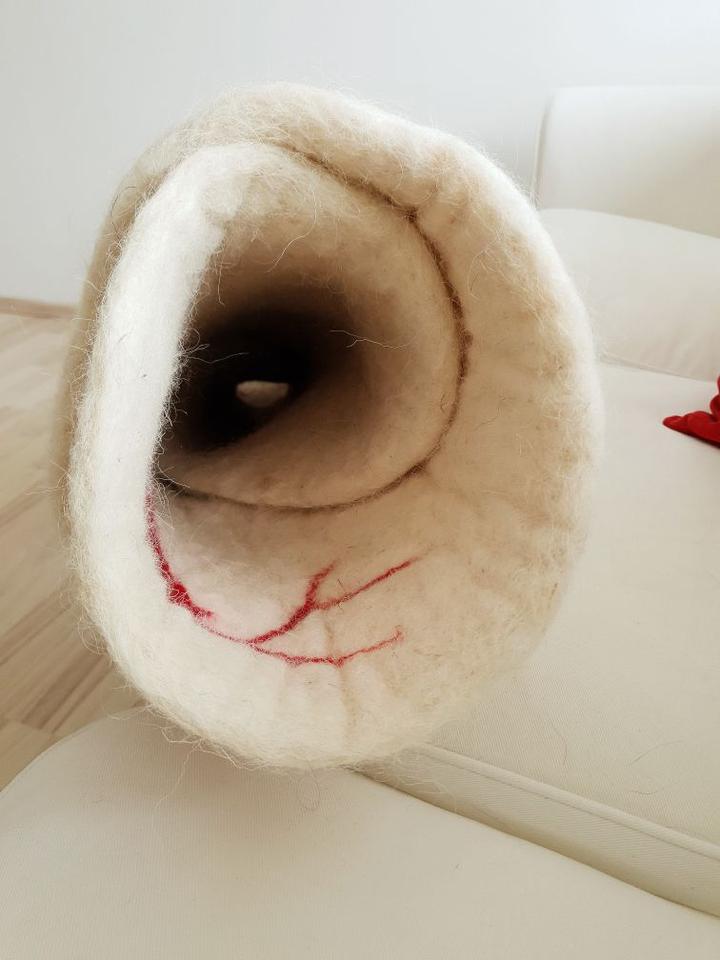
All the rugs are handmade, eco-friendly and animal-friendly, and I was curious to find out what led Nada to start practising such a specific craft. I thought this creative endeavour may have organically evolved from a love of arts and crafts in general, but she was in fact inspired by a documentary she saw about the environmental impact of wool as a pollutant.
You read that right - raw natural fiber can very well be a pollutant. Annual sheep shearing leaves behind massive quantities of fleece which essentially turns into waste overnight. Some people burn the leftover wool, some bury it, some just send it to landfill. On her part, Nada wanted to work out a way to recycle the fleece and give it a new life.
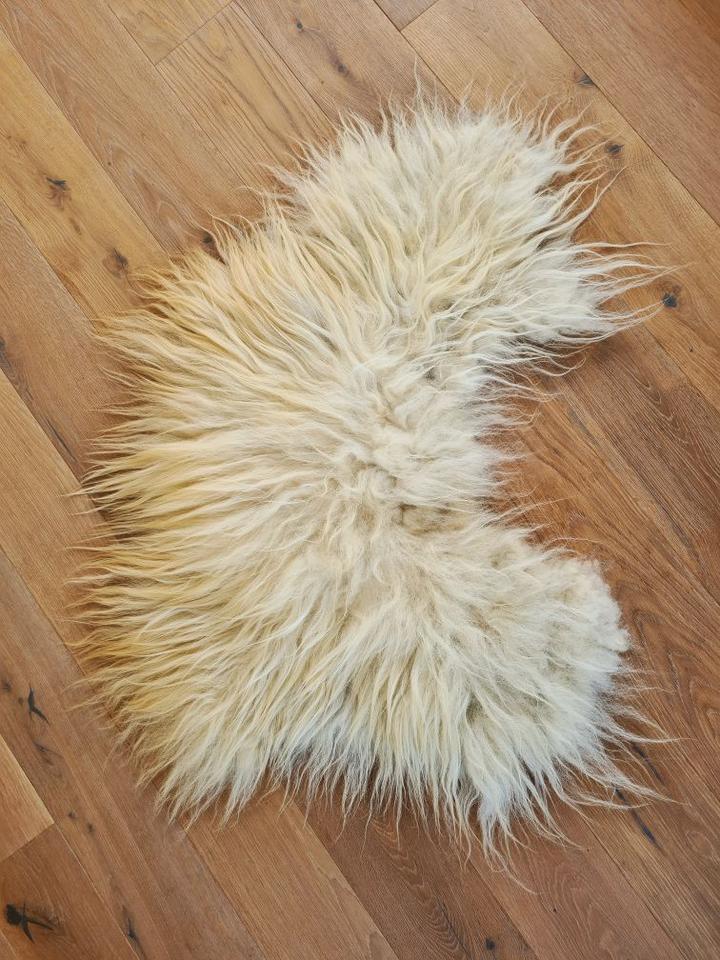
‘I had some unprocessed wool at home and the documentary got me thinking. If I could get more wool, what would I do with it? I don’t knit, I don’t spin yarn… I wanted to do something no one else was doing. So I did some googling, learned about felting, and I really liked the concept. I gave it a try; I started small, making pom-poms. Then I got myself a few felting needles and little by little, my projects expanded in size. Small at first, the rugs grew larger and larger until I made one with a 2-metre diameter.’
That particular rug is the largest she made to date and weighs an impressive 8 kilos, but on average Likamee rugs weigh around 2-3 kilos each (6,5lb). Coincidentally, that’s exactly how much wool is typically shorn from a single sheep, resulting in a neat principle of one sheep - one rug, give or take. I was delighted to learn that Likamee wool rugs have an easily traced origin, and a sweet story at that.
‘I source my wool from a woman who lives in Lika and tends to a flock of one hundred sheep. She loves those sheep so much. Each one has a name, and they respond to their names when called! It’s really something else. As an animal lover, I want that flock to be preserved for as long as possible.’
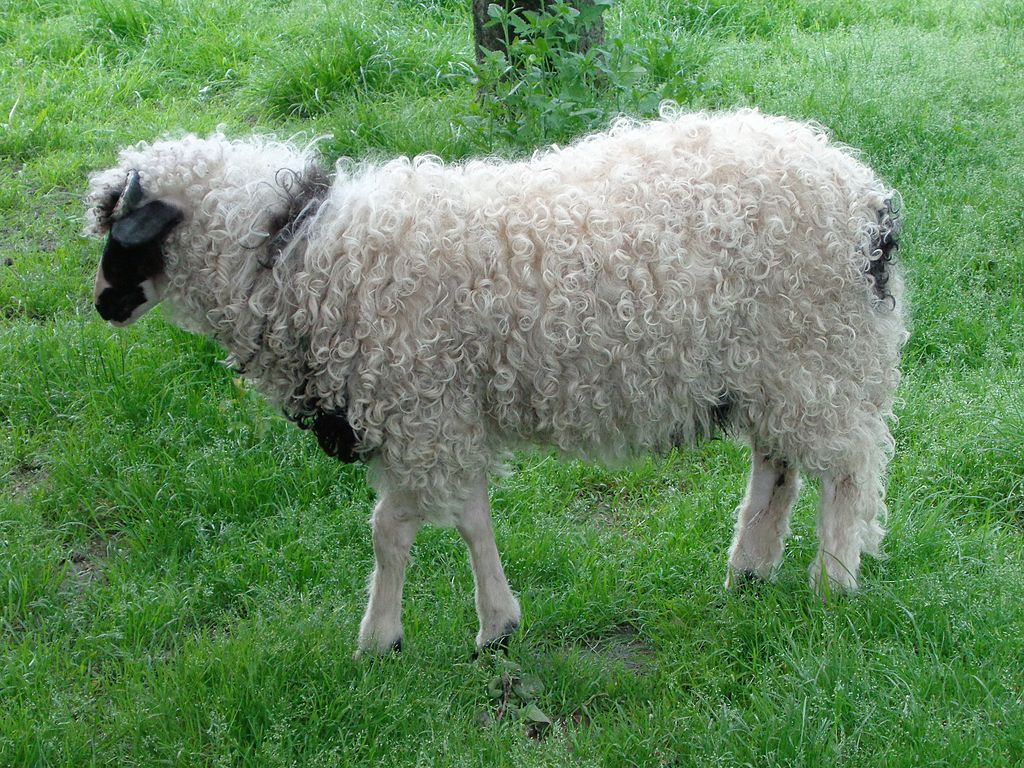
Lika Pramenka sheep / Wiki Commons
Animal-friendly manufacturing is a crucial part of the Likamee philosophy. Some of the rugs are made to imitate the look of sheepskin, but only in appearance: batches of shorn fleece are bonded by felting, resulting in beautiful and durable pieces created without any harm coming to animals.
‘My sheep are all safe and sound, they just get a haircut every once in a while’, said Nada with a laugh.

A sheep fleece Likamee rug with felted mat backing
These days, sourcing wool is the least of her concerns. Friends and family were very much on board ever since they first learned about the rugs, and everyone was happy to help by bringing more fleece for future projects. Nada soon had so much wool on her hands, storing it became a challenge. Once you have the raw material ready, what’s next?
As you might imagine, making a woollen rug by hand is a lengthy, demanding process. Nada and Ivana took me through all the steps involved in hand processing of wool, and learning how much time and effort is invested into each piece only made me appreciate the craft all the more.
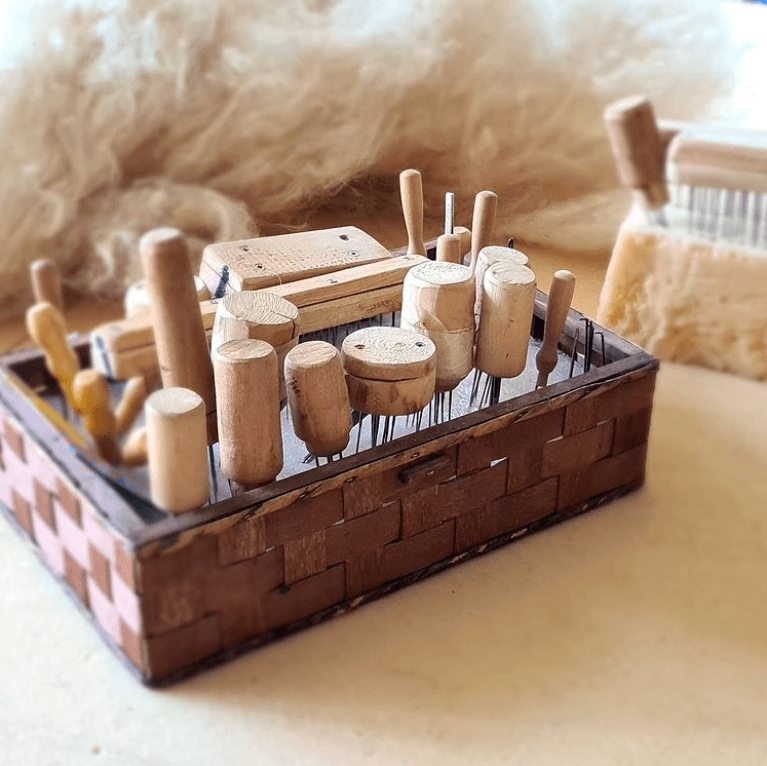
An assortment of felting needles, all handmade for Likamee manufacturing purposes
‘Say I was making a small rug and putting a few hours into it every day, it’d take me about a week to finish it. Since I’m basically stabbing wool [with the felting needle] by hand the whole time, I can work for four hours at a time, tops', says Nada. Check out the Instagram video showing the first stage of the dry felting process.
The creation of a rug is just the final step, though, and it’s the preparatory work that actually requires the most effort. There are stages to working with unprocessed fleece: it needs to be washed first, and that alone can take days.
Raw fleece typically has an unpleasant smell and is covered in mud, dirt and grease, so it needs to go through the wash a few times before it’s considered clean enough for further processing. Soak, rinse, repeat. Nada and Ivana do it all by hand.
‘You could technically use a washer, but all washing machines are too rough on wool even on the most gentle cycles. What occurs is that the fleece sort of felts itself and then you need to rip it apart again. That’d be incredibly hard: once wool is felted, it can very well last forever. So we wash it by hand instead.’
Once it’s air dried, the clean fleece goes through several rounds of combing. It’s split into smaller chunks with the help of a carding machine, is then combed by hand, and finally goes through a mechanical tool for fine carding (see the carder in action in this video). Is that the big contraption I saw on their Instagram? We wish it were big, they replied with a laugh.

The biggest carding tools intended for hobbyists are 30cm wide - it’s not much when you have to prep enough wool to make a rug, but anything bigger than that is only made for industrial manufacturing. They could really use a larger carder to process more wool at once, but had no luck searching for one.
‘Since my dad can make anything, he offered to build us a custom carding tool if we got him a metal sheet fitted with combing pins. Turns out, you can’t get one anywhere. We couldn’t source individual parts to build a bigger carder on our own, and so we struggle with the small one that we have. That’s why it takes so long; it’s a lengthy process in part due to the equipment’, explained Ivana.
Rough batches of wool are fine-combed until they transform into soft, airy clouds:
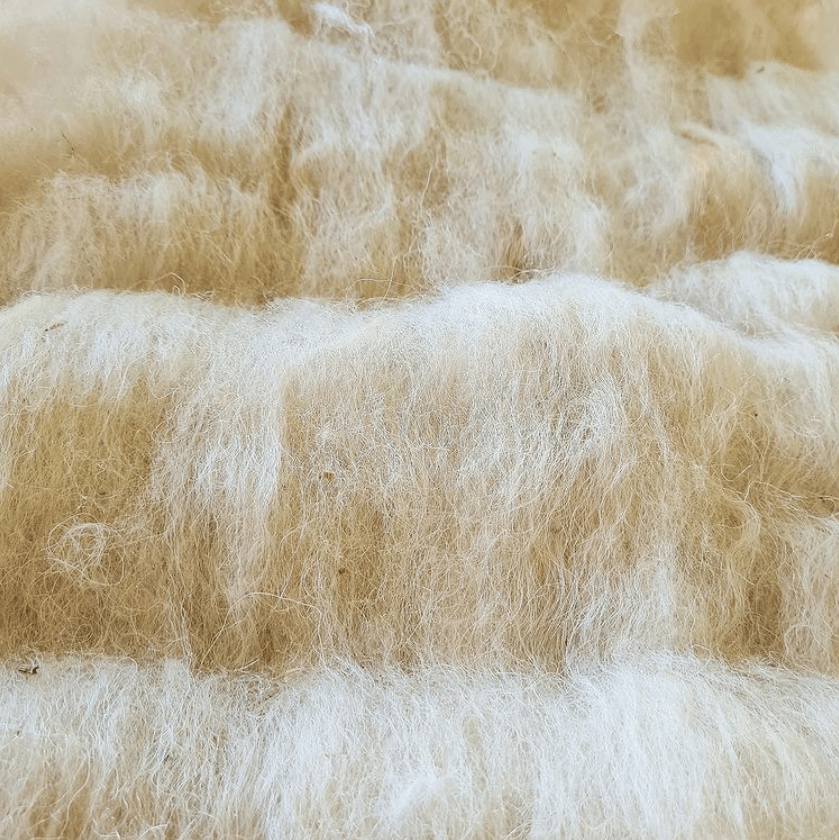
At that point, it’s finally time to felt. Several sheets of wool are stacked on a foam mat to make a rug, the number of sheets depending on the type of wool. Some are softer, some a bit rougher.
‘Our wool from Lika is more coarse, it takes more effort to work with. I also use wool from Pag island, that one’s softer. Interestingly, both are the Pramenka sheep breed, just originating from different areas.’
All Likamee rugs are unique, and Nada never makes the same design twice because it’s virtually impossible to repeat the same pattern. While some rugs retain the soft hues of natural sheep fleece, I’ve noticed a few eye-catching designs with accents of colour.
‘I started to dye the wool just to see how it would turn out. Since I’m working with eco wool, it only made sense to use eco-friendly dyes as well. I used coloured pencils at first and liked how it came out, then I started using natural purple dye. I’m planning to give avocado a try too… but mostly I just use natural wool. The experiments are more to ensure I have enough dyed wool at hand in case someone commissions a rug in a specific colour or pattern.’
Commissions are coming in indeed, and what started as a creative experiment and evolved into a hobby is now taking the shape of a business. For the last five years, it’s been all about learning. Now they’re working on branding and marketing, with Ivana managing the Likamee website and social media pages.
While they would both love for the project to become commercially viable and turn into a fully fledged family business, they primarily aim to build a strong design brand with a well-defined image: eco-friendly, high quality products.

In the meantime, they’re enjoying the creative process. Ivana said, ‘People love working with their hands, but aren’t fully aware of this until they actually start making something. It’s meditative, you get completely lost in it. It’s a different kind of focus than filling Excel sheets or preparing work presentations. We really enjoy it. It can be exhausting, but it’s so fulfilling.'
'The work is challenging, but so interesting', agreed Nada. 'There are times you get annoyed when something isn't turning out as you planned, but once you see your finished product, you know it’s all been worth it.'
We wish the best of luck to Likamee wool - head over to their website to browse the rug selection, and follow them on Instagram.
Unless otherwise noted, all images are courtesy of Likamee wool.


